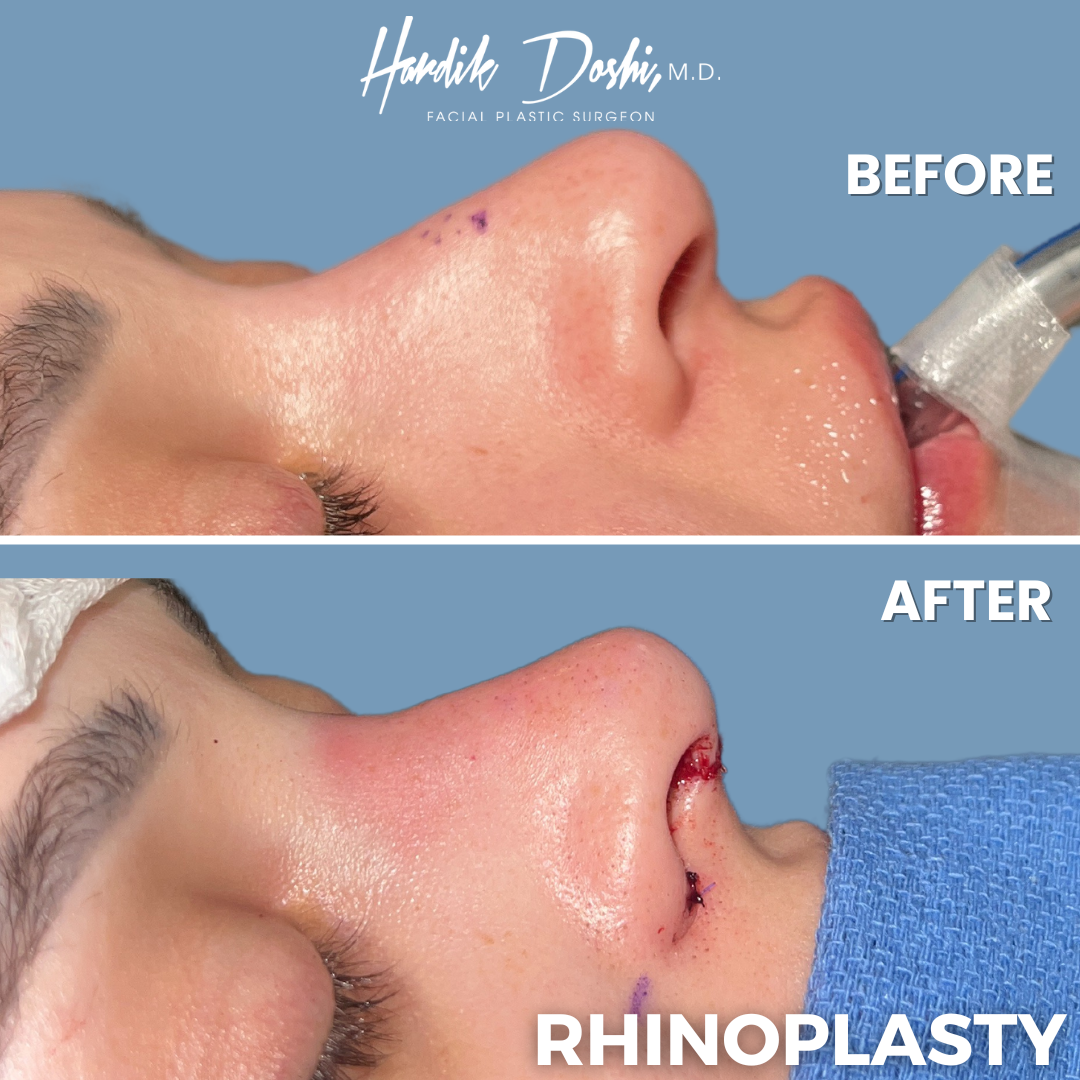
What To Expect With Swelling, Bruising, Pain, or Infection
Patients more frequently report nose and sinus congestion discomfort than pain. Pain and discomfort can be treated with the help of the recommended medication from your surgeon. After the first day, the soreness often fades to the point where Tylenol is sufficient.
While infection is an uncommon occurrence, if you notice developing infection indicated by fever or regional swelling with redness and discomfort, these symptoms should be reported to your surgeon. The proper course of treatment, such as antibiotics, will be started.
The cheeks and eyes may have different levels of bruising and swelling. After approximately two days, the degree of swelling and bruising reaches its climax. From that point forward, it gradually reduces over the next 5-7 days. You can expect your ultimate results in six to twelve months.
Tips to help with pain and swelling during the healing process
- You can ice your eyes and cheeks with a tiny bag of frozen peas or the cotton eye pads we'll give you at your preoperative appointment. For the first 48 hours, massage while awake for 15 minutes each hour.
- You will receive Arnica, a herbal medicine that helps to lessen swelling and bruising. This will begin two days prior to the procedure and continue for a few days after.
Nasal Care Tips After Rhinoplasty
- DO NOT USE A Q-TIP OR KLEENEX TO CLEAN YOUR NOSE (doing so could result in a septal perforation or a serious infection).
- For six weeks, avoid excessive nose blowing or sniffing because these actions will only aggravate the tissues that are healing. Open your mouth if you cough or sneeze (less force through nose).
- For the first night, you'll have nasal packing in place, forcing you to breathe predominantly via your mouth, which also causes a dry throat. A humidifier will assist with the dry throat and nasal congestion.
- In the first twelve hours following surgery, some nasal bleeding is typical.
- A little gauze dressing will be applied beneath your nose (Drip Pad). This pad might need to be changed around a dozen times the first night.
- If your nose is bleeding heavily (changing the drip pad every 10 minutes), you should sit up straight and elevate your head on three to four cushions. Applying small cold packs over the eyes and the back of the neck may be helpful. If none of these steps are successful, kindly contact the office. This happens quite rarely.
- We will take off the nasal packing the day following your surgery. After that, you should begin using nasal saline spray every 1-2 hours while awake, starting around 3 to 4 hours later. This will continue during the following few weeks.
- Small quantities of pinkish-reddish discharge from your nose and throat are normal for the first 3 to 5 days. This will eventually pass.
- Expect swelling to restrict your nasal passages for at least two weeks. Temporarily, this impairs taste and smell perception.
- Due to mouth breathing, dry lips are not unusual. As required, apply Vaseline or another salve to the lips.
- For 4-6 months, please refrain from any touch or near-contact activities. Nasal bones need six weeks to fully recover. Six weeks following surgery, full swimming is permitted.
Incision Care/Nasal Cast Tips After Rhinoplasty
- A small incision will be made under your nose and, in some situations, along the side of the nostrils.
- Apply a small amount of polysporin after gently rolling over the sutures twice a day with a Q-tip dipped in hydrogen peroxide.
- After three or four days, the sutures will be taken out.
- After the sutures are out, steri (reinforced tape) will be applied and left on until day seven.
- Dry off the nasal cast. On the seventh post-operative day, it will be eliminated.
- The nasal tip will be slightly pulled up and quite puffy after the cast is removed. Over the following 14 days, the edema will decrease.
- We will provide you nasal exercises by day 7 to 10 that will assist keep the sides of your nose straight and thin while preventing the creation of scar tissue.
- For the first year, it is crucial that you protect this incision line from the sun by always wearing SPF 20 sunscreen.
- It can take up to a year to get your full results.
When Should You Call Your Surgeon After Rhinoplasty?
- You have a fever that is at least 101 degrees.
- Painkillers fail to relieve the severe pain.
- You have swelling, redness, bleeding, and discharge from an incision site that smells bad.
- You are experiencing significant nose tip swelling, redness, or warmth.
- Bleeding does not stop after applying direct pressure and ice continuously for at least 20 minutes.
- Persisting nausea and/or vomiting.


